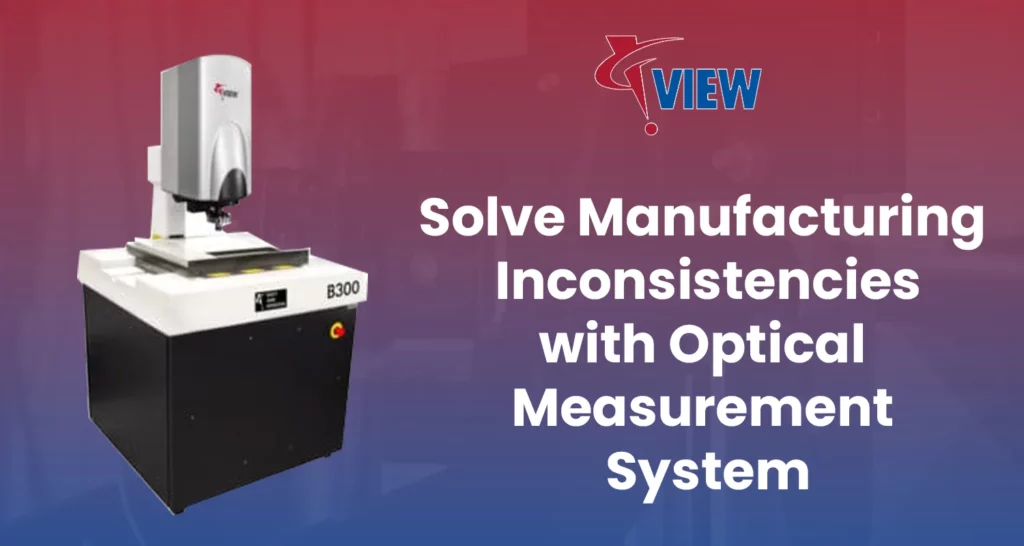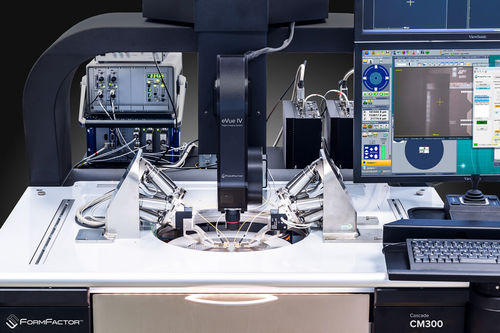Answers to common questions about optical measurement system adoption
Answers to common questions about optical measurement system adoption
Blog Article
The Duty of Optical Measurement Solutions ahead of time Metrology Methods
Optical measurement systems have actually transformed width, bringing a degree of precision that was once unthinkable. You could be amazed to discover just how these technologies, based upon essential concepts like representation and disturbance, are used across numerous industries. Their non-contact capacities not only improve precision yet likewise improve procedures. As you check out additionally, you'll uncover how these systems are forming the future of dimension and quality assurance.
The Advancement of Assessment: A Historical Viewpoint
As you explore the history of assessment, you'll locate that its advancement shows humankind's mission for accuracy and standardization. From old worlds making use of body parts as devices of dimension to the development of standardized weights and procedures, each step shows our need for precision. The Egyptians developed the pyramids utilizing exact dimensions, while the Romans progressed design with their sophisticated measuring tools.
During the Renaissance, clinical advancements shifted the emphasis towards a lot more empirical methods, leading the way for modern-day metrology. The intro of the statistics system in the late 18th century marked a substantial milestone, establishing universal criteria. Throughout the 20th century, technical advancements additionally transformed metrology, allowing highly precise measurements in various fields.
Today, assessment remains to advance, incorporating electronic modern technology and automation. This background highlights not simply the significance of dimension but likewise our unrelenting pursuit of enhancing precision and consistency in our significantly complicated globe.
Principles of Optical Measurement Solutions
Comprehending the principles behind optical dimension systems is necessary for accurate lead to assessment. You'll intend to think about basic optical principles, measurement accuracy elements, and effective system calibration strategies. Each of these elements plays an essential role in guaranteeing your measurements are specific and trusted.
Fundamental Optical Concepts
While discovering optical dimension systems, you'll encounter basic optical principles that form the foundation of exact data purchase. Light behaves in foreseeable ways, and comprehending these habits-- like representation, diffraction, and refraction-- is necessary for efficient measurements. You'll use lenses and mirrors to adjust light and concentrate it onto your target, guaranteeing accuracy in your readings. Additionally, the wave nature of light permits disturbance patterns, which can boost dimension resolution. Polarization can additionally play an essential duty in distinct signal from sound, improving the clearness of your results. By mastering these concepts, you'll be equipped to leverage optical innovations efficiently, leading the method for advancements in metrology and guaranteeing your measurements are both trustworthy and repeatable.
Measurement Accuracy Elements
To achieve high measurement accuracy in optical systems, several factors come into play, affecting the dependability of your results. The high quality of the optical components matters substantially. Top quality lenses and detectors reduce aberrations and noise, ensuring your dimensions are exact. Second, ecological problems like temperature level and moisture can affect dimensions, so maintaining a secure environment is crucial. Third, the placement of the optical system is vital; also small imbalances can result in significant mistakes. Lastly, the wavelength of light made use of influences the resolution and accuracy of your dimensions. By resolving these variables, you can improve the general efficiency of your optical measurement systems, leading to even more exact and reliable lead to your width applications.
System Calibration Techniques
Achieving high dimension accuracy is only component of the formula; correct system calibration strategies are just as vital in optical measurement systems. To ensure your system supplies trusted results, you need to regularly calibrate it utilizing basic reference materials. Begin by adjusting the optical components, like lenses and mirrors, to lessen systematic errors. Next, employ known measurements to validate the system's output and make required modifications. It's also vital to represent environmental aspects-- temperature level and humidity can impact measurements. Implement a routine calibration schedule to preserve uniformity in time. Ultimately, document all calibration procedures and outcomes; this will assist you track efficiency and resolve any kind of drift in accuracy. With these techniques, you'll improve the reliability of your optical measurement system.
Secret Technologies Behind Optical Measurement
Optical measurement systems depend on a number of key technologies that improve precision and efficiency in metrology. One important innovation is interferometry, which makes use of the interference of light waves to determine tiny displacements and surface area irregularities with extreme accuracy. You'll also find laser scanning systems, which capture detailed 3D data of items quickly, making them invaluable for dimensional evaluation.
In Addition, CCD and CMOS sensors play a significant duty in transforming light into electric signals, permitting high-resolution imaging and specific dimensions. Advanced algorithms for image processing additionally improve measurement precision by assessing data in real time, removing sound and enhancing features.
Finally, fiber optics supply flexibility and the capacity to determine in challenging settings while keeping signal stability. By leveraging these innovations, you can attain premium lead to your metrology jobs, ensuring that your measurements are both exact and reputable.
Applications of Optical Dimension in Industry
As markets significantly demand precision and effectiveness, the applications of optical dimension systems have actually ended up being crucial throughout various industries. In production, these systems aid you keep track of measurements and resistances in real-time, ensuring quality control without lengthy manual checks. In the automobile market, optical measurements help in straightening components with precision, improving safety and performance.
In electronics, you're utilizing optical approaches to evaluate min attributes on circuit boards, discovering problems that might bring about failings. The aerospace field take advantage of non-destructive screening methods, allowing you to examine materials and elements without jeopardizing their honesty.
Optical dimension also plays a crucial duty in textiles, making sure textile dimensions satisfy exact requirements. optical measurement. With their capacity to give high-resolution information rapidly, these systems equip you to make discover this info here enlightened choices, streamline procedures, and ultimately drive development across your market
Enhancing Precision and Effectiveness in Measurements
When you consider boosting precision in dimensions, accuracy in your measurement techniques is important. By streamlining these procedures, you can accomplish quicker results without giving up top quality. Let's explore just how adopting innovative optical dimension systems can elevate both precision and effectiveness in your job.
Accuracy in Measurement Strategies
Accuracy in dimension strategies is essential for achieving dependable outcomes in assessment, specifically given that tiny disparities can lead to substantial mistakes. By making use of innovative optical dimension systems, you can boost the precision of your dimensions. In enhancement, exact measurements enable you to preserve quality control, guaranteeing that products fulfill strict specifications.
Streamlining Measurement Procedures
To improve accuracy and performance in dimensions, streamlining your measurement processes is vital. Begin by adopting optical measurement systems that supply real-time data, decreasing the time invested on hands-on recording. These systems frequently integrate flawlessly with existing software application, enabling you to automate data collection and analysis.
Next, systematize your dimension procedures. By implementing regular treatments, you reduce irregularity and enhance repeatability. Don't neglect to regularly adjust your equipment to assure its precision.

The Effect of Optical Dimension on Research Study and Growth
As researchers endeavor to push the limits of development, optical dimension systems have actually come to be important devices in the development procedure. These systems give you with specific, real-time information that enhances your ability to analyze complex products and frameworks. In numerous areas, from biotechnology to aerospace, you rely upon optical measurements to optimize designs and boost item efficiency.

With high-resolution imaging and non-contact techniques, you can decrease example disruption, permitting more exact results. This ability to record minute information accelerates your R&D cycle, allowing you iterate layouts rapidly and efficiently. Optical dimension promotes collaboration across techniques, as the information generated is often conveniently interpretable and shareable.
Inevitably, integrating optical dimension systems into your research study not only enhances productivity yet additionally strengthens your understanding of the sensations you research. By leveraging these advanced methods, you're better geared up to introduce and stay in advance in an affordable landscape.
Future Trends in Optical Dimension Equipments
With the fast improvement of technology, you're likely to see significant changes in optical dimension systems that will redefine their application throughout numerous industries. You'll discover an approach enhanced automation and assimilation of artificial knowledge, enabling real-time data analysis and improved precision. Miniaturization is another trend; small gadgets will certainly make it possible for measurements in tighter spaces, making them suitable for areas like aerospace and biomedical applications.
Anticipate to see systems that can operate in challenging environments, providing dependable measurements in severe problems. As these innovations converge, you'll useful reference find that optical dimension systems not only enhance accuracy yet likewise improve workflows, inevitably driving advancement and effectiveness in your jobs.
Frequently Asked Inquiries
Just How Do Optical Dimension Solutions Compare to Standard Measurement Techniques?
Optical measurement systems offer higher precision and faster results contrasted to standard techniques. You'll locate they catch even more data factors precisely, lowering human error and increasing dependability, making them a preferred selection in various applications.
What Industries Advantage Many From Optical Dimension Systems?
You'll discover industries such as aerospace, vehicle, and electronics benefit most from optical dimension systems. These industries depend on exact measurements to ensure quality and performance, boosting effectiveness and reducing expenses via sophisticated technology.

Are Optical Measurement Systems Expensive to Implement?
Optical dimension systems can be pricey to carry out, however their precision and effectiveness commonly validate the cost. Spending in such innovation can result in significant lasting cost savings and enhancements in quality throughout different applications.
What Skills Are Called For to Operate Optical Measurement Systems?
To run optical measurement systems, you'll require strong logical abilities, interest to information, and proficiency in software program tools. Knowledge with optics and an understanding of measurement principles will certainly additionally improve your efficiency and efficiency.
Just How Do Ecological Factors Affect Optical Measurements?
Ecological aspects like pop over here air, humidity, and temperature high quality can distort optical measurements. You'll see variations in accuracy because of light disturbance or refraction. optical measurement. Maintaining stable problems is important for specific and reliable optical measurement results
Final thought
In summary, optical measurement systems are revolutionizing assessment by supplying unmatched precision and efficiency. As you explore future patterns, you'll see just how the assimilation of AI and automation will proceed to raise dimension practices, driving advancement and improving high quality control.
Achieving high dimension accuracy is only component of the equation; correct system calibration methods are just as essential in optical dimension systems.When you think regarding boosting precision in dimensions, precision in your dimension techniques is important. By utilizing sophisticated optical dimension systems, you can enhance the accuracy of your dimensions.To boost accuracy and efficiency in measurements, simplifying your measurement processes is essential. How Do Optical Measurement Systems Compare to Standard Dimension Techniques?
Report this page